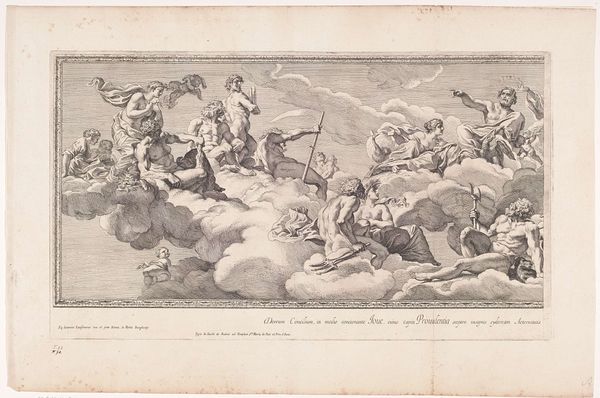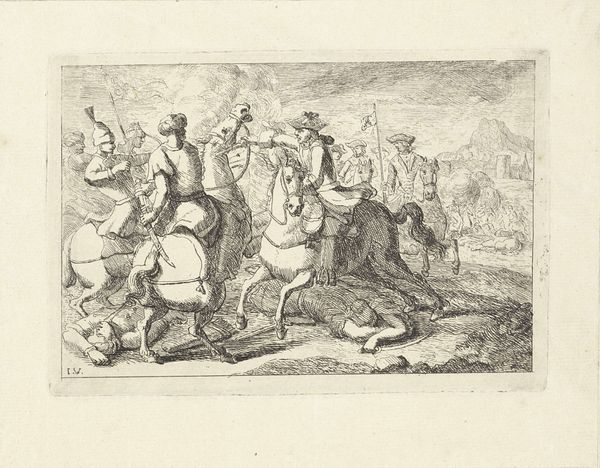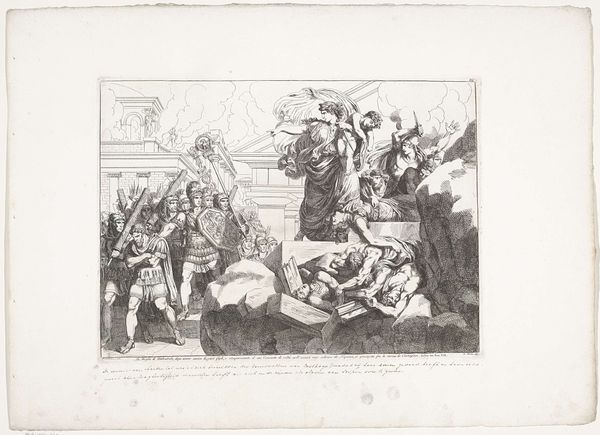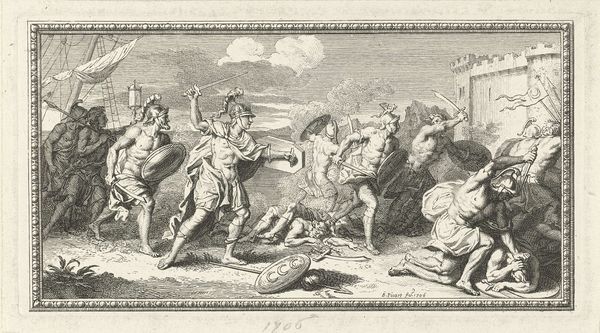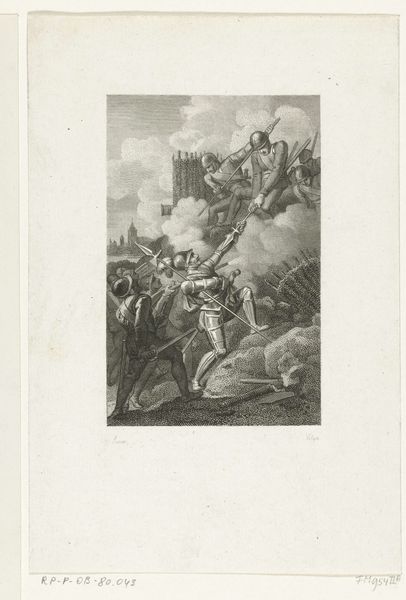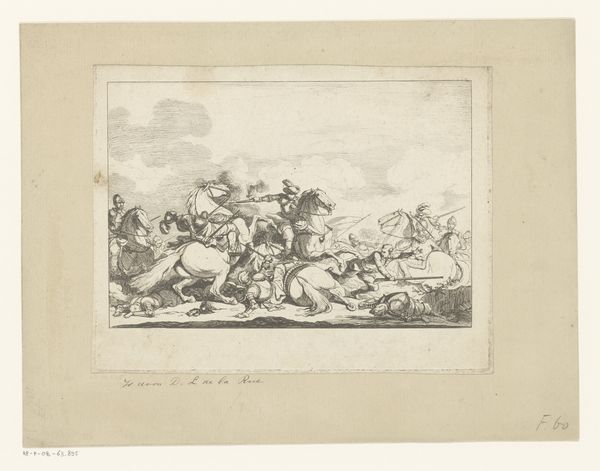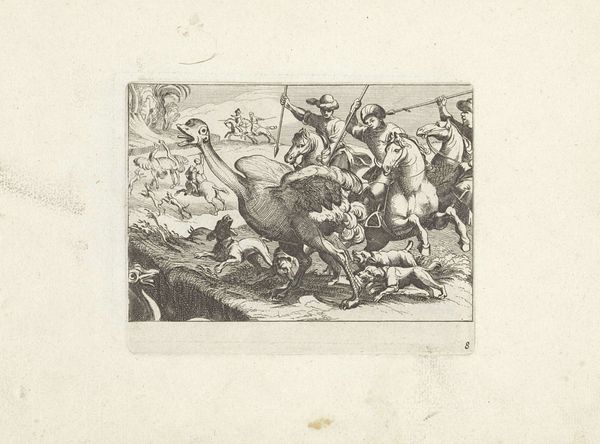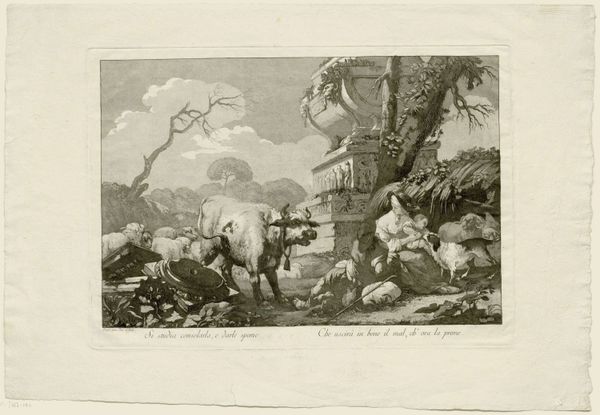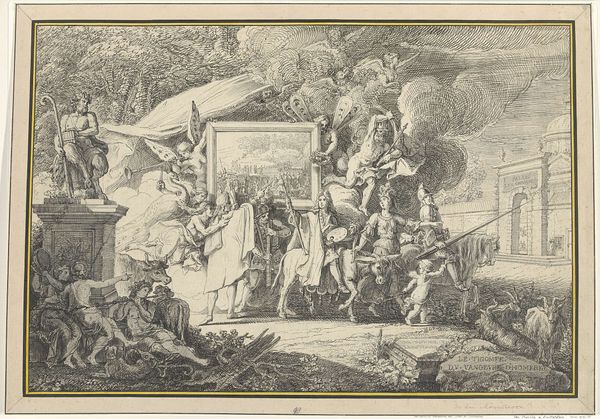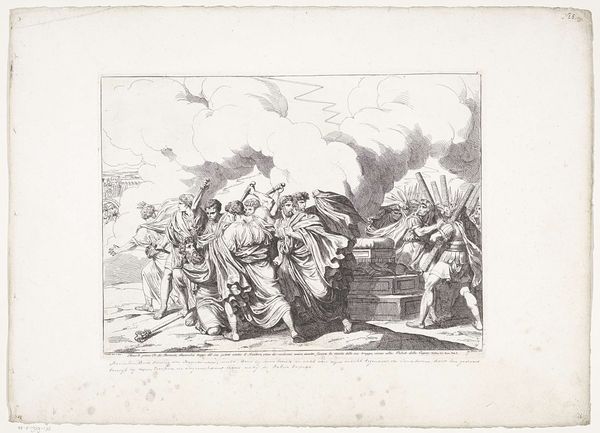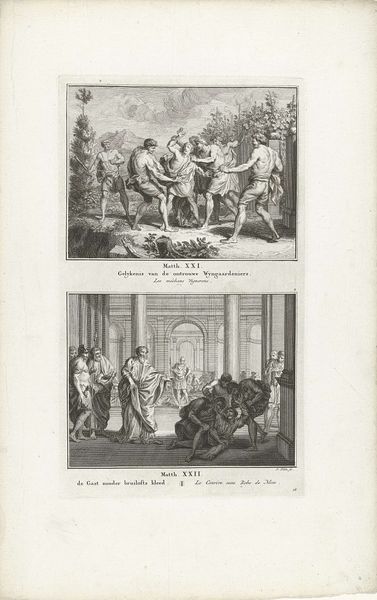
print, engraving
#
allegory
#
baroque
# print
#
old engraving style
#
vanitas
#
history-painting
#
engraving
Dimensions: height 67 mm, width 140 mm
Copyright: Rijks Museum: Open Domain
This is 'Allegory on Transience and Redemption,' an engraving made by Bernard Picart in 1717. Engraving is an intaglio printmaking process, where the design is incised into a metal plate. Picart would have used a tool called a burin to cut lines into the copper, creating grooves that hold ink. The plate is then inked, wiped clean, and pressed onto paper, transferring the image. Look closely, and you can see the fineness of the engraved lines. The hatching creates shading and depth, and the precision allows for intricate details like the billowing clouds and the figures’ expressions. The act of engraving itself, with its meticulous cutting and transferring, reflects the theme of transience: a material process to capture an ephemeral idea. Prints like this were crucial for disseminating ideas and images in the 18th century. Unlike a unique painting or sculpture, engravings could be reproduced, making art more accessible to a wider audience. The labor involved in this reproductive technology is easily overlooked, but was essential to the distribution of visual culture at the time.
Comments
No comments
Be the first to comment and join the conversation on the ultimate creative platform.
